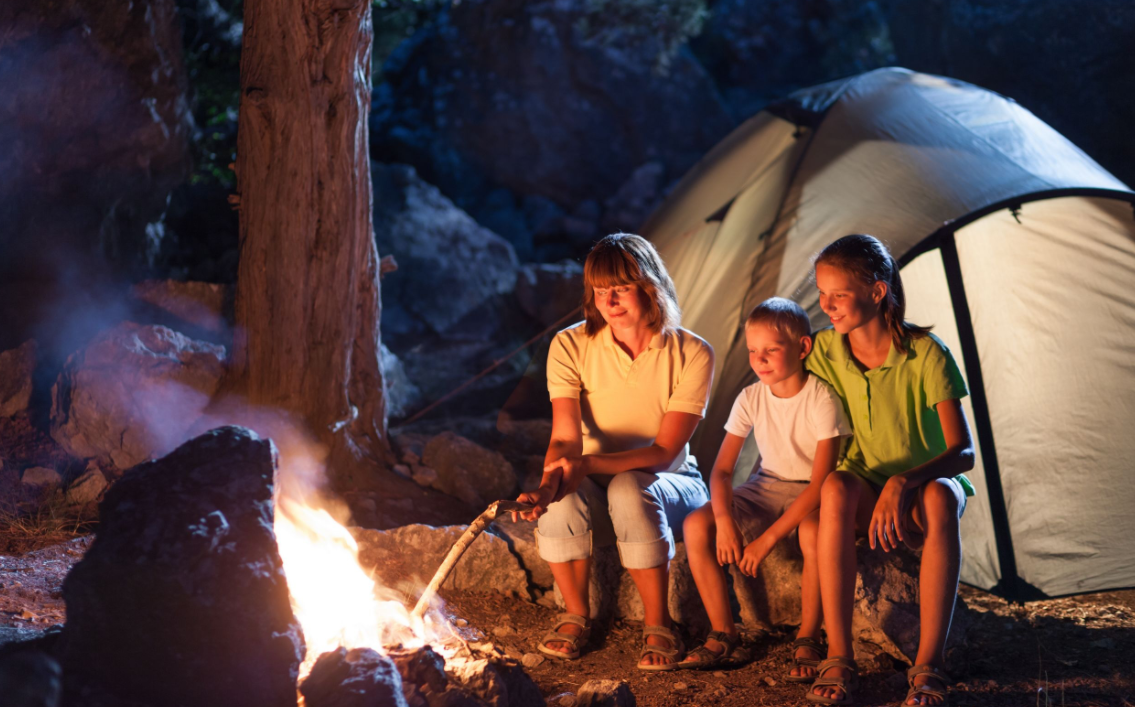Camping is one of the more popular outdoor activities nowadays. Lying in a wide field, looking up at the stars, you feel as if you have been immersed in nature. Often campers leave the city to set up camp in the wild and worry about what to eat. What kind of food do you need to take to go camping? The following is a small series of things you need to take to go camping in the wild, I hope to help you.
Things you’ll need to bring to go camping in the wilderness
1. What dry food do you need to take to go camping
Whether your camping trip is risky or not, you will need food. The rule of thumb is to bring only what is expected to be necessary for each meal. For example, if your group is small, bring two cups of instant cereal instead of a whole can of oatmeal. Mix food in sealed plastic bags. If you’re camping next to a camper or car, use a cooler to store perishable foods like meat so they don’t spoil.
Also, it’s best to keep bottled water with you. Or bring a small packet of iodine so you can disinfect water from the wilderness or water that may not be clean. You can also filter the cleanest water you can find or boil it for at least ten minutes.
2. What should I wear to go camping
Wear loose, neat clothes. Of course, in the colder months, you need to wear more clothing — like hats, gloves, jackets and thermal underwear — than in the warmer months. The secret is to remove a few layers of clothing before you start to sweat, so you can stay dry. If sweat gets into your clothes, you’ll feel bad.
Then there is the choice of shoes. Hiking shoes are ideal, and one way to prevent blisters while hiking is to rub a layer of soap under your ankles and toes before setting out. Keep soap with you and apply it to potential trouble spots if your feet are about to fray.
Be sure to bring a poncho in case it rains; The last thing you want is to get wet, which can trigger hypothermia.
3. What do you need to prepare for wilderness camping
Tent: Choose a stable structure, light weight, wind resistance, rain resistance strong double tent is preferable.
Sleeping bags: Down or goose down bags are lightweight and warm, but they must be kept dry. When conditions are humid, artificial vacuum bags may be a better choice.
Backpack: The backpack frame should fit the body structure and have a comfortable carrying system (such as straps, belts, backboards).
Fire starter: lighter, matches, candle, magnifying glass. Among them, candle can be used as light source and excellent accelerant.
Lighting equipment: camp lamp (two kinds of electric camp lamp and air camp lamp), headlamp, flashlight.
Picnic utensils: kettle, multifunctional picnic pot, sharp multifunctional folding knife (Swiss Army knife), tableware.
Wilderness Camping Tips
1. Wear close-fitting long clothes and trousers. To avoid mosquito bites and branches pull hanging, if the clothes are wide, you can tie up the trouser legs, cuffs.
2. Wear well-fitting non-slip shoes. When the sole of the foot pain, quickly put a small piece of medical tape on the pain, can prevent blistering.
3. Prepare warm clothes. It’s much colder outside than inside.
4, prepare enough clean water, dry food and commonly used medicines, such as mosquito repellent, antidiarrheal medicine, trauma medicine, etc.
5. Ask a guide to lead the way. Usually the forest park area is large, often there is no obvious markers in the forest. So when you go into the forest, always go with a guide and don’t go too far into the forest. Pay attention to natural landmarks such as ancient trees, springs, rivers and strange rocks as you walk through the forest. Don’t panic if you get lost, and follow these signs to slowly retrace your steps.
6. Save drinking water. When water is cut off, be careful to use natural water sources in the wild and do not eat the fruits of plants you do not know. In an emergency, you can cut the wild plantain for water.
Camping in the wilderness for help
The countryside is difficult to see from a distance or from the air, but travellers can make themselves more visible in the following ways:
1. The internationally used mountain distress signal is a whistle or light. Six beeps or flashes per minute. After a one-minute pause, repeat the same signal.
2. If there are matches or firewood, light a pile or several piles of fire, burn and add some wet branches and leaves or grass, so that the fire rises a lot of smoke.
3. Wear bright clothes and a bright hat. In the same way, take the brightest and largest clothes as flags and wave them constantly.
4, with branches, stones or clothes on the open space to build SOS or other SOS words, each word at least 6 meters long. If in the snow, step the words on the snow.
5, see helicopters to the mountain rescue and fly close, light smoke missile (if available), or near the site for help, build a fire, smoke, let the mechanic know the wind direction, so that the mechanic can accurately grasp the location of the signal.
Post time: Feb-06-2023
 fannie@nbtorch.com
fannie@nbtorch.com +0086-0574-28909873
+0086-0574-28909873






